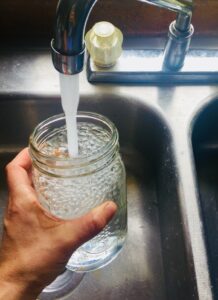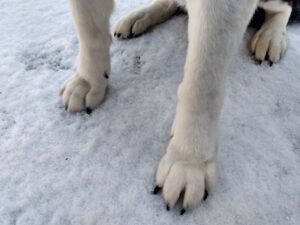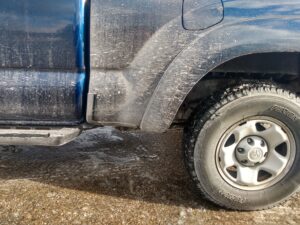Impact on You
Drinking water
 The salt spread as an anti-icing agent is not like edible like table salt, and is not suitable for human consumption. Drinking water contaminated with high levels of chloride can produce an unpleasant taste and be detrimental to people on low-sodium diets due to diabetes or other health issues.
The salt spread as an anti-icing agent is not like edible like table salt, and is not suitable for human consumption. Drinking water contaminated with high levels of chloride can produce an unpleasant taste and be detrimental to people on low-sodium diets due to diabetes or other health issues.
At present, there are no federal or state primary health-based drinking water standards for sodium or chloride.
Although there is sufficient scientific evidence that shows that the vast majority of sodium ingestion is from food
rather than drinking water, the Environmental Protection Agency (EPA) has recommended a drinking water advisory level of 20 mg/L sodium for those persons on a physician-prescribed “no salt diet” related to hypertension treatment.
The EPA has identified a secondary or aesthetic standard for chloride of 250 mg/L as a concentration at which
chloride can be expected to cause a salty taste in drinking water. New Hampshire has adopted 250 mg/L chloride
and 250 mg/L Sodium as state secondary standards under Env-Dw 706.
Source: New Hampshire Department of Environmental Services Sodium and Chloride Fact Sheet
Pets
 De-icing salt is a corrosive and also dries out organic matter including the skin of animals’ paws. Repeated exposure to salt will dry a pet’s skin and cause local irritation and cracked paws. It can also lead to inflammation, redness, soreness, and bacterial infection. Ingestion can lead to gastrointestinal irritation in minor cases and, in more severe cases in which a pet ingests a large amount of rock salt, hypernatremia—the official term for elevated blood sodium levels.
De-icing salt is a corrosive and also dries out organic matter including the skin of animals’ paws. Repeated exposure to salt will dry a pet’s skin and cause local irritation and cracked paws. It can also lead to inflammation, redness, soreness, and bacterial infection. Ingestion can lead to gastrointestinal irritation in minor cases and, in more severe cases in which a pet ingests a large amount of rock salt, hypernatremia—the official term for elevated blood sodium levels.
Source: petmd.com
Property
 With repeated exposures over time, de-icing salt can cause extensive damage to vehicles. Rust forms when moisture and oxygen combine on metal, and salt accelerates that process. Corrosion usually first affects the car’s exhaust and muffler systems, coil springs and the frame of the car. Road salt can erode key safety components of your vehicle including your braking system.
With repeated exposures over time, de-icing salt can cause extensive damage to vehicles. Rust forms when moisture and oxygen combine on metal, and salt accelerates that process. Corrosion usually first affects the car’s exhaust and muffler systems, coil springs and the frame of the car. Road salt can erode key safety components of your vehicle including your braking system.
The damage doesn’t end with cars. Salt also affects the metal components of large infrastructure like bridges and culverts. Salt applied to driveways, parking lots, walkways, stairs, etc. contribute to countless dollars of damages upon entrances, automatic door pads, lobby floors, escalators, railings, etc.
Salt can damage the value of your home and property with the contamination of a drinking water well. In severe cases of chloride contamination, a drinking water well may need to be replaced through the State of New Hampshire’s Well Replacement Program.
Trees and plants

Photo: US Forest Service
Salt can be incredibly damaging to trees as it disrupts the process of osmosis preventing the tree or plant from taking up water through its roots. Dehydration results as the sodium separates from the chloride and bounds up water and nutrients in the plant tissues.
The second way salt affects plants is through the air. Dried up de-icing salt is stirred up and atomized into the air by moving vehicles. This salt coats the roadside plants and draws moisture out. Overtime vegetative growth is slowed, and in areas of high salt concentration dies off.
Millions of dollars of damages are incurred by landscaped parking lots, walkways, and courtyards with gardens, ornamental trees and shrubs.
